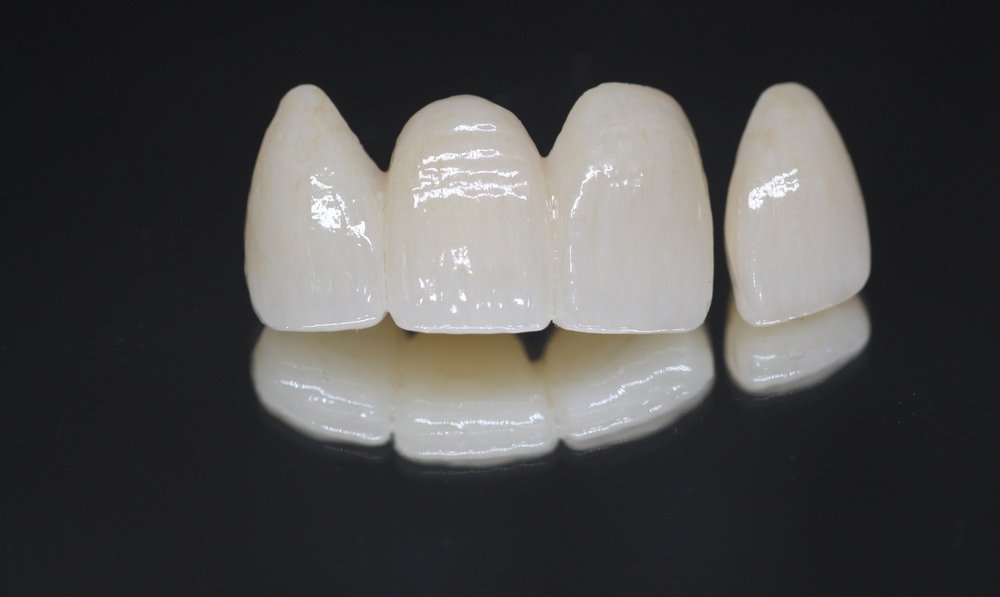Symptoms of an ill-fitting dental bridge include discomfort, shifting teeth, and difficulty chewing. Patients may also experience gum irritation or noticeable gaps.
Dental bridges serve as a popular solution for missing teeth, restoring both functionality and aesthetics. However, proper fit is crucial for their effectiveness. An ill-fitting bridge can lead to various complications, affecting your oral health and overall comfort. Signs of a poorly fitted bridge often manifest as pain, difficulty while chewing, or changes in bite alignment.
Addressing these symptoms promptly can prevent further dental issues. Understanding the importance of a well-fitted dental bridge can help maintain oral health and improve your quality of life. Regular check-ups with your dentist ensure that your bridge remains in optimal condition.
Introduction To Dental Bridges
Dental bridges are used to replace missing teeth. They help restore your smile and improve chewing. Bridges also maintain the shape of your face.
The main benefits include improved speech and better bite function. They prevent remaining teeth from shifting out of place.
| Type of Bridge | Description |
| Traditional Bridge | Uses crowns on adjacent teeth for support. |
| Cantilever Bridge | Supported on one side only, ideal for limited spaces. |
| Maryland Bridge | Uses a metal framework and resin for support. |
| Implant-Supported Bridge | Attached to dental implants for more stability. |
Importance Of A Proper Fit
Having a proper fit for a dental bridge is very important. An ill-fitting bridge can lead to many problems. It may cause pain or discomfort while eating or talking. This can make daily activities difficult.
Other issues include gum irritation or infection. A poor fit can also lead to tooth decay in nearby teeth. It may even cause bite problems, affecting overall dental health.
A skilled dental professional can help ensure a correct fit. They will check the bridge’s alignment and make adjustments as needed. Regular visits to the dentist can prevent these issues from worsening.
Common Symptoms Of Ill-fitting Bridges
Ill-fitting dental bridges can cause significant pain and discomfort. This pain may occur in the gums or around the bridge. It can make daily activities hard.
Difficulty chewing is another common symptom. The bridge may not fit properly, leading to uneven pressure on teeth. This can cause tooth sensitivity or even damage to surrounding teeth.
Other signs include:
- Swelling in the gums
- Bad breath due to food trapping
- Visible gaps around the bridge
Visual Clues And Sensations
Gaps between the dental bridge and gums can cause discomfort. These spaces may trap food and bacteria, leading to decay.
Misalignments can affect how teeth fit together. This can create difficulty while biting or chewing food. An uneven bite can lead to jaw pain or headaches.
Unusual bite sensations often indicate a problem. Patients may feel pressure on certain teeth when chewing. This can cause sensitivity or discomfort during daily activities. Regular check-ups help identify these issues early.
Oral Health Complications
Ill-fitting dental bridges can lead to serious oral health complications. One major issue is gum disease. This condition occurs when bacteria build up around the bridge. Signs include swollen gums and bad breath. Decay may also develop if the bridge doesn’t fit right.
Another concern is bone loss. Poorly fitting bridges can cause stress on the jawbone. This stress may lead to bone deterioration over time. Indicators include pain and difficulty chewing. Regular check-ups are important to catch these problems early.
Troubleshooting At Home
Experiencing problems with a dental bridge can be frustrating. Start by checking the fit. If it feels loose, try to reposition it gently. Rinse your mouth with warm salt water to soothe any irritation.
Use dental wax to cover any sharp edges. This can help prevent injury to your gums. If you notice swelling or pain, apply a cold compress to the outside of your mouth.
Keep an eye on your symptoms. Bleeding gums or persistent pain may indicate a serious issue. If problems persist, consult your dentist immediately.
| Symptom | Action |
| Loose Bridge | Reposition gently |
| Swelling | Apply cold compress |
| Bleeding | Seek dental help |
Professional Remedies And Adjustments
Regular reevaluation of a dental bridge is essential. This helps detect any issues early. A dentist will check the fit and comfort of your bridge.
Adjustments can help improve comfort and functionality. This may involve reshaping the bridge or the surrounding teeth. Dental professionals can ensure the right fit through careful assessment.
| Replacement Options | Description |
| Dental Implants | Permanent solution; looks and feels like natural teeth. |
| Removable Dentures | Easy to use; can be taken out for cleaning. |
| Another Bridge | Replacing the current bridge with a new one. |
Preventive Measures And Maintenance
Regular dental visits are vital for maintaining a healthy dental bridge. Schedule check-ups at least twice a year. Your dentist can spot any issues early. This helps avoid serious problems later.
Home care tips are equally important. Brush your teeth at least twice daily. Use a soft-bristled toothbrush to avoid damaging your dental bridge. Floss gently around the bridge to keep it clean. Mouthwash can help reduce bacteria.
Keep an eye out for any changes. Report discomfort or looseness to your dentist. Following these steps can extend the life of your dental bridge.
Richmond Hill Smile Centre: Your Trusted Partner in Emergency Dental Care
When a dental emergency strikes in Richmond Hill, Richmond Hill Smile Centre is the clinic you can rely on for top-tier care. Conveniently located at 10157 Yonge St Unit 101, Richmond Hill, ON L4C 1T6, Richmond Hill Smile Centre is known for its prompt, compassionate, and expert handling of dental emergencies. Whether you’re dealing with a severe toothache, a broken tooth, or another urgent dental issue, the skilled team at Richmond Hill Smile Centre is ready to assist you.
Contact Richmond Hill Smile Centre at +1 647-362-4755 or via email at info@richmondhillsmilecentre.ca to receive the immediate care you need. Their dedicated team is committed to providing quick and effective treatment to alleviate pain and protect your dental health.
Frequently Asked Questions
What Are Common Signs Of An Ill-fitting Dental Bridge?
Common signs include discomfort, pain, and difficulty chewing. You may also notice swelling around the bridge or gum irritation. If your bridge feels loose or shifts, it’s a clear indication of poor fit. Address these symptoms promptly to avoid further dental issues.
How Can I Tell If My Dental Bridge Is Loose?
A loose dental bridge often feels unstable when biting or chewing. You might also experience food trapping underneath the bridge. If you can wiggle the bridge with your tongue, it is likely loose. Consult your dentist immediately if you notice these signs.
What Should I Do If My Dental Bridge Hurts?
If your dental bridge causes pain, first assess your chewing habits. Avoid hard or sticky foods temporarily. Rinse your mouth with warm salt water for relief. Schedule an appointment with your dentist to evaluate the issue and discuss potential adjustments.
Can An Ill-fitting Dental Bridge Cause Gum Problems?
Yes, an ill-fitting dental bridge can lead to gum problems. It may cause inflammation and irritation in surrounding tissues. Over time, this can result in gum disease. Regular dental check-ups are essential to prevent these complications.
Conclusion
Experiencing symptoms of an ill-fitting dental bridge can be uncomfortable and concerning. Discomfort, shifting, or difficulty while eating are all signs to watch for. Timely intervention can prevent further complications. Always consult your dentist if you notice any issues. Prioritizing your oral health ensures a better quality of life.



